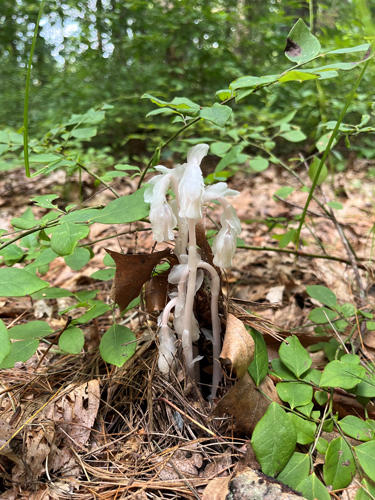By Liz Nye, New England Botanic Garden Staff
October 2023
Plants are the ultimate pros at turning problems into opportunities. Since they can’t move on their own, they’ve evolved seemingly endless adaptations to get what they need from their surroundings. Over millennia, plants have honed survival strategies that stretch the imagination, inspiring wonder, awe, and sometimes — eek!
Kingdom Plantae is full of curiosities. There are plants that require fire to grow and others, months of cold. Some plants entice pollinators with flowers that resemble other animals, even the smell of dead animals, and pheromones that mimic potential insect mates. There are plants that can generate their own heat to melt snow, plants that require little water to survive, and plants that can store up to 1,000 gallons of H2O within their tissues. Some plants have seeds that can fly. Others have seeds that can only germinate if they pass through the gut of an animal. Some plants eat animals. Parasitic plants feed off the nutrients of their neighbors.
So, with spooky season upon us, we’re celebrating a short list of plants with ooh, ahh, and especially eek-worthy adaptations visitors can encounter at the Garden.
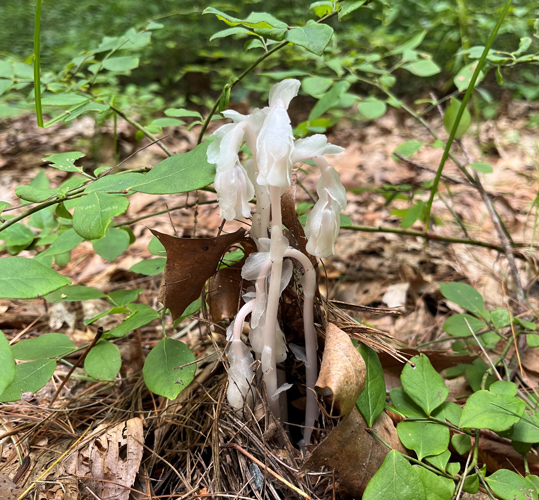
Ghost Plant (Monotropa uniflora)
Commonly mistaken for fungi, this ghostly white plant rises out of the leaf litter of the forest floor in mid-summer. An odd, eyeball-like flower grows tucked within white leaves on a nodding stem that over time stands up straight. Ghost plant is almost entirely without color because it lacks chlorophyll. Instead of photosynthesizing to capture energy from the sun, parasitic ghost plant uses the mycorrhizal fungi that attach themselves to the roots of neighboring trees and draws nutrients through them. This adaptation enables ghost plant to thrive in low-light or highly competitive conditions where other plants cannot. Native to the forests of North America, ghost plant can be found blooming throughout the Inner Park into early fall.
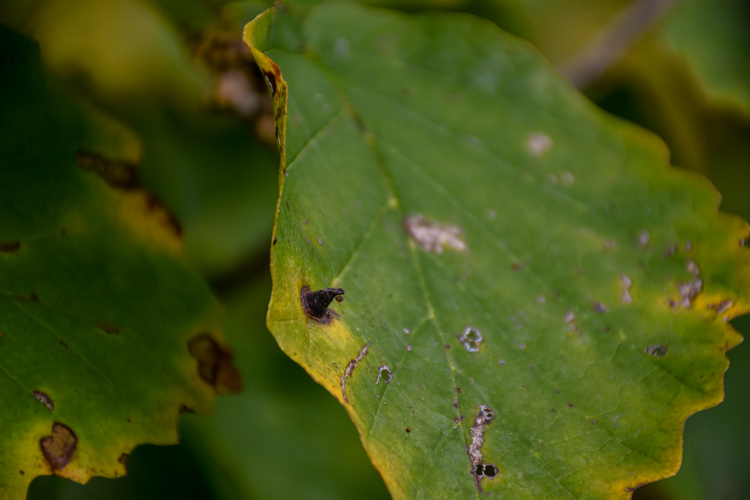
Witch Hazel (Hamamelis virginiana)
This fall-bloomer is a crowd pleaser. But bright wispy yellow flowers aren’t the only things to look for on witch hazel this season. Witch hazel hosts an aphid known as the witch hazel cone gall aphid (Hormaphis hamamelidis). Young aphids are born on witch hazel leaves, and in response to their presence, the leaf produces a cone-shaped gall. The aphid grows within the gall and emerges by early summer. As the gall dries, it resembles a black witches’ hat perched on the plant’s yellowing leaves. Look for witches’ hats on the witch hazel at the intersection of Pliny’s Allee and The Ramble.

Doll’s Eyes (Actaea pachypoda)
They’re watching you! Also called white baneberry, this spooky plant is native to the forests of eastern North America. Its white berries cluster on stems that reach out above its foliage. Each berry is dotted with black giving them the distinctly creepy look of a doll’s eye, hence the name. Like its relatives red baneberry (Actaea rubra) and black cohosh (Actaea racemosa), doll’s eyes make an excellent addition to a shady garden space. Look for doll’s eyes in the center of the Inner Park.
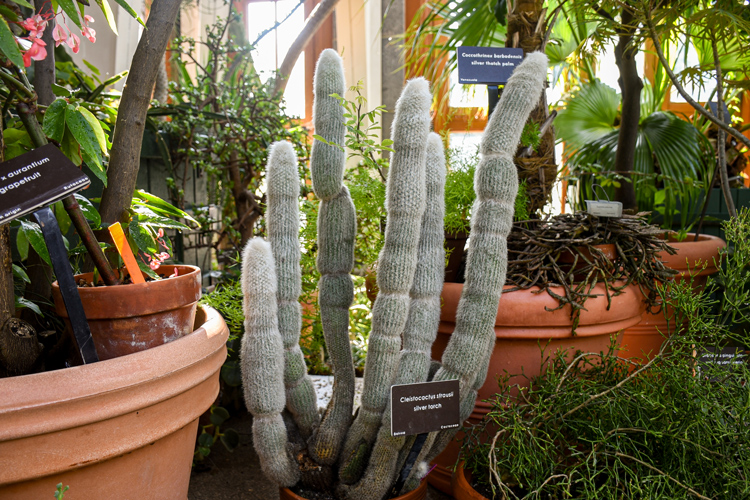
Old Man Cactus (Cleistocactus strausii)
Native to the mountainous regions of Bolivia, this tall, upright succulent appears wrapped in wispy, woolly-looking hairs—but don’t be fooled! The touchable looking white wisps covering this cactus are spines and they are deceptively sharp. These spines help to insulate the cactus from heat and cold. Ironically, the woolly spines that give this cactus its name are most prolific when the plant is young. Also called silver torch, old man cactus can currently be found in the Orangerie.
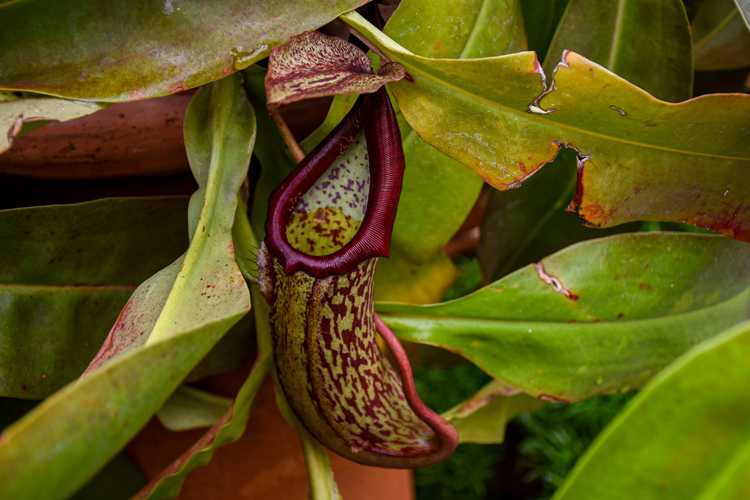
Carnivorous Plants
Most plants depend on soil to provide the nutrients they need. But for plants that have evolved to grow in places with extremely nutrient-poor soil, there’s another option—turn carnivore. Carnivorous plants have evolved a variety of mechanisms for trapping and digesting animals. Their prey are mostly insects but can include small mammals and birds. Carnivorous plants use modified leaves as either passive or active traps. The deep pitfall trap of the tropical pitcher plant (Nepenthes spp.) and the wide-open maw of the Venus fly trap (Dionaea muscipula) are two of the most iconic passive and active traps. Other carnivorous plants like sundews (Drosera spp.) trap insects using sticky hairs. Carnivorous plants use enzymes to digest their prey.
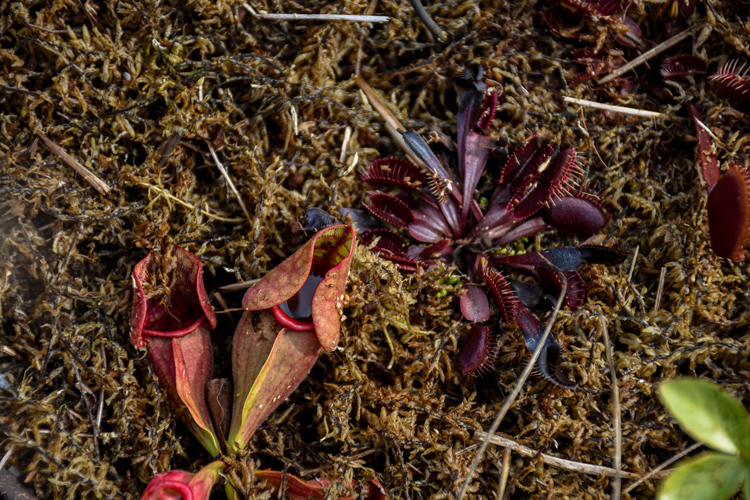
In the Orangerie, visitors can find a topical pitcher plant on display with pitchers over seven inches long. During summer and early fall, displays of temperate carnivorous plants including North American pitcher plants (Sarracenia spp.), Venus fly traps, and sundews can be found in The Ramble. These species are native to the continent, and some can be found in fens and bogs here in New England. Like all temperate species, they require a period of winter dormancy.
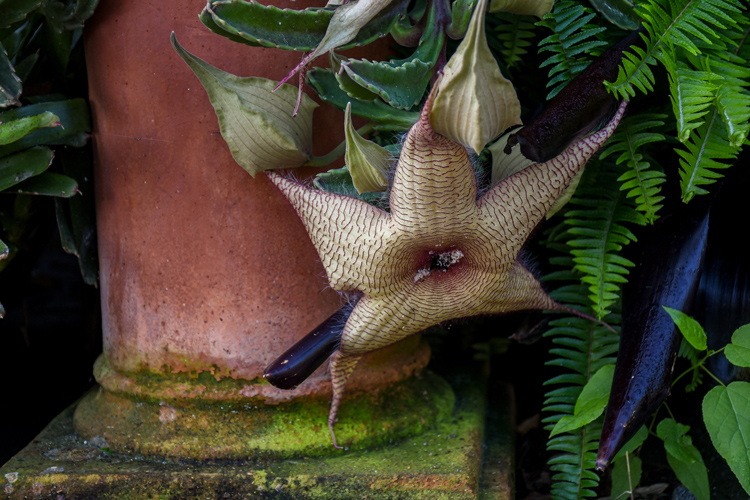
Zulu Giant (Stapelia gigantea)
This South African plant, a spine-free succulent, may be the Garden’s spookiest. It exhibits massive yellow flowers shaped like bulky starfish. Each odd-looking bloom on the Zulu giant is covered with red, bristly hairs. And that’s not all. The Zulu giant is a carrion plant. Its flowers smell of rotting flesh to attract its preferred pollinator—flies. The Zulu giant blooms from late summer to early fall. Its last blooms of the year are open in the Orangerie! If you visit soon, you may still catch them!
Liz Nye is the Public Relations Manager at New England Botanic Garden. She holds a master’s degree in science writing from Johns Hopkins University and enjoys learning about and writing about all things plants.
Botanical names of plants pictured above in order of appearance:
Ghost Plant (Monotropa uniflora), Witch Hazel (Hamamelis virginiana), Doll’s Eyes (Actaea pachypoda), Old Man Cactus (Cleistocactus strausii), Tropical Pitcher Plant (Nepenthes spp.), Purple Pitcher Plant (Sarracenia purpurea) with Venus Fly Trap (Dionaea muscipula), Zulu Giant (Stapelia gigantea).

